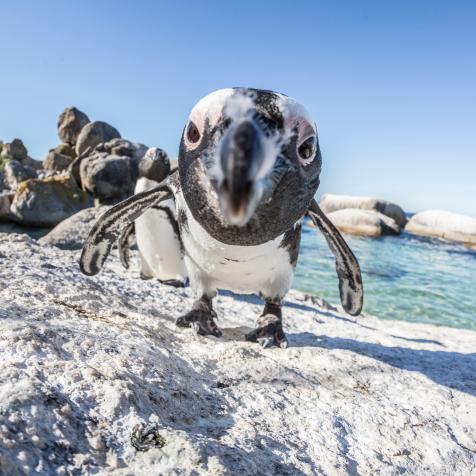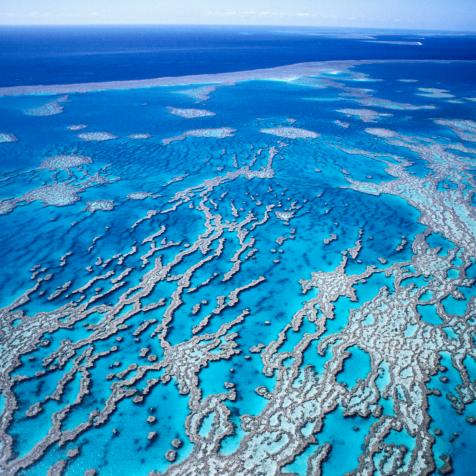
Mischa Keijser
Offshore Wind Farms Present Huge Green Gains and Tricky Challenges
Wind power is one of the most important renewable energy sources for reducing air pollution and climate warming emissions across the planet. Turbine energy has a huge green advantage with a carbon footprint 90 times smaller than coal and 40 times smaller than gas-fired power.
Both land and offshore wind farm sites produce zero greenhouse gas emissions from generation. And supplying 20% of US electricity through wind power could reduce annual electricity generation carbon dioxide (CO2) emissions by 825 million metric tons by 2030–equal to CO2 emissions from powering 150 million homes for a year.
Offshore wind in particular has huge potential and is forecast to grow by 13% a year to become a $1 trillion business, according to the International Energy Agency. There are big advantages to harvesting wind power at sea, but also challenges.

Smartshots International
Pros of Offshore Wind:
- Wind is the movement of air caused by heat from the sun. But besides being non-polluting, like solar energy, wind power can be harvested day or night. Wherever the wind blows–and it blows stronger and more steadily out at sea–then turbines can generate power.
- Unlike other low-carbon technologies like nuclear power, wind turbines are quick to build and install. They can begin generating energy as soon as they are finished and pay back the energy used in their manufacture in three to six months.
- Wind power is now cheaper than energy created from fossil fuels. Despite offshore wind being more expensive to build than onshore, prices are falling and will be around 40–50 per cent cheaper by 2050.
- Situating wind farms offshore allows land to be put to better or more profitable use, like growing food or trees, as wildlife habitat for building homes or a multitude of industries. The US Department of Energy has estimated potential offshore wind energy capacity of more than 4,150 gigawatts. Total US generating capacity in 2020 was around 1,200 gigawatts, so land can easily be freed up for other purposes.
- Off-shore and land-based wind farms use virtually no water, compared to other generation methods. Nuclear-and coal-fired plants need large amounts for mining, washing or other processing, and generation. By 2050, wind energy could save 260 billion gallons of water–enough to fill 400,000 Olympic-size swimming pools.
- Wind farms at sea access wind at greater speeds, unobstructed by hills or buildings, creating up to three times as much electricity as turbines on land. Air currents are 70% stronger on the open ocean and one study says farms in the North Atlantic could supply the entire planet’s energy demands.
- Coastal cities have high energy demands, so siting wind farms offshore keeps generation near to where it is needed most. They create jobs locally and are a reliable domestic energy source.
- Floating wind farms allow high-efficiency energy generation in the deepest waters. Taking turbines out into the open ocean means they are out of sight of land and any objections about them spoiling the sea views.

Ashley Cooper
And the Cons:
- Offshore wind farms are more expensive to build and tricky to maintain. Engineers need in-depth data on weather and wind characteristics, sea depth, currents and seabed formation to assess the structural loading, likely corrosion or ice formation. Maintenance can be hazardous in stormy conditions and specialist ships are needed to deploy and mend the turbines.
- As a result of that, planning and permits are harder to achieve than projects on land. Financing, environmental reviews, delays and legal challenges have held the industry back, so despite its potential, global demand is not being met as yet.
- Large waves and storm or even hurricane-force winds at sea can damage turbines and their blades, so they are fitted with protective systems to shut down in extreme conditions. Subsea cables linking them to the mainland are also prone to damage from bottom trawling, anchor sweeps and other hazards.
- Laying submarine cables and foundations for turbines can disturb marine habitat. The effects of offshore wind farms on birds and marine animals are not fully understood, but bird strike and the disorienting effects of their noise on whales and other species need more study. Turbine foundations do provide artificial reefs for fish, but the way they affect local ecosystems is complex.
- Wind farms built within sight of coastal cities can be unpopular with local residents, impacting tourism and house prices. How they affect local businesses, such as commercial fishing fleets, also needs to be carefully managed.


















